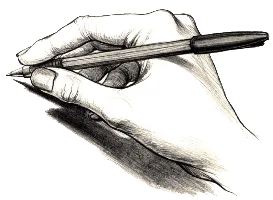Comprehension Exercise – 36
Creative Writing – 94
Read the text below and answer the questions that follow
How Britain’s opium trade impoverished Indians [BBC]
At the time when the novel, “The Sea of P0ppies’ written by Amitav Ghose is set, poppy was harvested by some 1.3 million peasant households in northern India. The cash crop occupied between a quarter and half of a peasant’s holding. By the end of the 19th Century poppy farming had an impact on the lives of some 10 million people in what is now the states of Uttar Pradesh and Bihar. A few thousand workers – in two opium factories located on the Ganges river – dried and mixed the milky fluid from the seed, made it into cakes and packed the opium balls in wooden chests.
The trade was run by the East India Company, the powerful multinational corporation established for trading with a royal charter that granted it a monopoly over business with Asia. This state-run trade was achieved largely through two wars, which forced China to open its doors to British Indian opium. Historian William Dalrymple, author of The Anarchy, a new book on the East India Company, says it “ferried opium to China, fighting the opium wars in order to seize an offshore base at Hong Kong and safeguard its profitable monopoly in narcotics”.
Some historians have argued that the opium business bolstered India’s rural economy and kept the farmers happy. That was not the case, as new research by Rolf Bauer, a professor of economic and social history at the University of Vienna, has found. For years Dr Bauer trawled through archival documents looking at the costs of producing opium and paying money to farmers. He also examined an exhaustive history of the trade – the 1895 Report of the Royal Commission of Opium, which ran into seven volumes and 2,500 pages.
It contained 28,000 questions and hundreds of witness reports on the use and consumption of opium in India, and studied how the colonial government regulated its production and consumption. The result of the research is published in Dr Bauer’s new study of the trade, The Peasant Production of Opium in Nineteenth-Century India. His conclusion: the opium business was hugely exploitative and ended up impoverishing Indian peasants. “Poppy was cultivated against a substantial loss. These peasants would have been much better without it,” Dr Bauer told me.
This is how the East Indian Company ran the trade. Some 2,500 clerks working in 100 offices of a powerful colonial institution called the Opium Agency monitored poppy farmers, enforced contracts and quality with police-like authority. Indians workers were given commissions on every seer – a traditional unit of mass and volume used in large parts of Asia – of opium delivered on their beat. In the thriving, state-run global trade, exports increased from 4,000 chests per year at the beginning of the 19th Century to more than 60,000 chests by the 1880s. Opium, says Dr Bauer, was for the large part of the 19th Century, the second-most important source of revenue for the colonial state. It was only outmatched by land taxes. (India remains the world’s biggest producer of legal opium for the global pharmaceutical market.)
Questions
1. In the years preceding the onset of the twentieth century, how many farmers earned their livelihood from poppy farming?
2. How and where was the poppy processed before being shipped to China?
3. Which company was exporting poppies to China, and how did they manage to get a foothold there?
4. How did Dr. Bauer succeed to disprove the notion that poppy cultivation was beneficial to the Indian peasants?
5. What administrative set-up the East India Company put in place to monitor the cultivation of poppy by farmers, and its collection from them?
6. How did poppy export soar with the passage of years?
Answers
1. Nearly 10 million farmers of Bihar and UP earned their living from poppy cultivation around the period when the nineteenth century was drawing to a close.
2. An army of labourers worked in two factories that were located around the banks of the Ganges. They squeezed the white milky fluid from the poppy seeds, dried them, and made them into balls. These balls were packed in crates for shipment to China.
3. The East India Company was the sole exporter of opium to China. The company had a royal chapter given by the British Queen to do these exports. Following a war with China where the British emerged as the victors, China was forced to cede Hong Kong to the East India Company. Thus, Hong Kong became the foothold for the Company in mainland China.
4. Dr. Brauer, a professor of economic and social history at the University of Vienna, was a keen researcher who went to great lengths to ascertain if forced poppy cultivation did really help the India’s peasants. He dug into voluminous historical documents to find out if the price paid by the monopoly British buyers of East India Company paid a fair price for the opium grown by the farmers. He published his findings in a book titled ‘The Peasant Production of Opium in Nineteenth-Century India’. According to him the procurement price was not adequate to meet the cost of growing the crop. Because of the mismatch between the production and the sales price, the farmers were pushed deeper and deeper into debt. Their condition worsened with the years. Dr Brauer’s assiduous work ran into 2500 pages, and conclusively proved the a poppy cultivation brought more misery to the peasants.
5. Th East India Company had set up nearly 1o00 offices where some 2500 Indians worked to monitor cultivation, procurement, payment and packaging of the poppy from the farmers.
6. Poppy exports rose by leaps and bounds in the nineteenth century. From a paltry 4000 tons at the start of the century it soared to about 60,000 tons by the 1880s.
